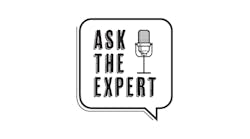With the collision repair market projected to be worth $196 billion by 2020, it means that there is plenty of work to go around.
But not just any shop can handle the complexity of today’s vehicles. Aside from experienced technicians, you need the right equipment.
As the technology in cars become more and more prevalent, shops needs to have the capacity to repair properly and efficiently. With the plethora of tools available on the market, these three shop owners and operators, which make up $36.5 million of combined revenue between their shops, offer their must-have technologies for their technicians.
The Tool: GYSPOT Inverter
The Shop: Oka’s Auto Body, Waipahu, Hawaii, annual revenue of $4.5 million
Website: http://www.gys.fr/?lang=en
For Kyle Okahara, part owner of Oka’s Auto Body and Carl Vincenti, director of business development, their process for choosing what type of technology to bring into the shop is quite extensive.
Always keeping up with industry trends, Vincenti says that once they get word of something that peaks their interest, they immediately get their techs together and start the process of getting buy in. To aid in the process, before purchasing anything, they ask the manufacturer to bring it in and show the team members and get feedback.
That was the process when the shop decided to invest in the GYSPOT Inverter (a resistance-spot welder). He says the biggest advantage is that the welder can automatically sense what type of steel it is welding, whereas with other welders, extensive adjustment of the settings must be done before the job. The smart welders just require a quick recalibration. According to Okahara, smart welding is relatively new, which gave him interest.
In addition to sensing the type of steel, it can identify the thickness of what it is welding. Okahara says that some steels can’t be cut through, so the welder will establish that early on. He also says that they are rated higher as far as amperage, which is beneficial since it’s a requirement for many OEMs.
The only downside to that was that Okahara had to reconfigure the shop to accommodate the amperage. The reconfiguration included upgrading the electrical current, adding more electrical lines, updating the junction box and installing five different electrical drops throughout the shop for the welder since it can’t be plugged into a wall, but instead needs a special socket.
Okahara’s shop began using the welder in February 2017, but he soon found that his $32,000 investment (not including the amperage accommodation) was worth it. He says that the welder can save at least 30 minutes on a sizeable panel for a replacement-type job. He expects to get a full ROI sometime in the next year.
While the techs love the tool now, Okahara says that they did have a harder time transitioning at first because the tool requires some attention to cleaning and the panel set-up.
The techs have to be careful with cleaning because the tool measures the distance between the sheets of steel and if there is anything in between the sheets, like debris, it could be a problem. Once the techs got used to the tool being “finicky” at times, the tool became very easy to use.
The welder also aids in the shops team concept with its techs, allowing them to handle more work, increase production and throughput.
The Tool: Mitchell Diagnostics
The Shop: 1stCertified Collision Center, seven locations throughout Southern California, $28 million combined revenue.
Website: http://www.mitchell.com/products-services/collision-repair-shop-solutions/car-diagnostic-system
As the beta shop for Bosch scan tools, it was a natural first step for 1stCertified Collision Center to begin trying Mitchell Diagnostics, soon after it launched.
As the first scan tool designed for the collision repair industry, Mitchell Diagnostics has partnered with Bosch to help many shops strengthen their claims process, including 1stCertified Collision Center.
Ron Villard, vice president of operations, says that the tool has not only saved time, but also improved the shops’ already efficient estimating process.
Once the vehicle is dropped off, it undergoes a teardown for damage analysis, then the tool is plugged in and the car is turned on. The tool will read all of the fault codes in the car, collision related or not.
It provides the benefit of identifying unrelated prior damage before the accident, which Villard says is helpful because then they can notify the insurer.
Villard says that it also has helped the shop with better communication and documentation overall.
“None of the other tools have that type of communication. We’re able to actually download the information into the system and electronically send it to our service advisors so that they can have documentation to repair the vehicle. That’s the big upside to this,” he says.
This has helped Villard with insurer relationships. He says for every insurer that he has had to bring the Mitchell documentation to, he hasn’t had one insurer say that they weren’t going to take care of the repair.
“It created a better relationship for us with the insurers and the customers,” he says.
Since the scanning tool is so thorough, it helps the shop in scheduling the proper type of repair for each and every vehicle which is crucial today with all the new technology available in cars, Villard says.
For example, if there’s a bumper that needs to be taken off of a car, sometimes it will have a camera mounted in the front of it that needs to be recalibrated. The system will tell him that.
The tool has helped improve cycle time since a more accurate estimate is written up front. It was a huge time saver in that it increased Villard’s hours per day to one hour per day per car.
The shops pay a single monthly fee that includes the tool, the Bosch vehicle database and the Mitchell diagnostic workflow system. There is no per-use fee.
According to Mitchell, the MD-350 is $1,495 plus a $339 per month fee. The MD-200 is $995 plus a $249 per month fee.
The Tool: The Pro Spot i4 Inverter Resistance Spot Welder
The Shop: Superior Service Center, Eagan and Apple Valley, Minn., $4 million of collision only revenue
The Website: http://prospot.com/
While this isn’t a new piece of technology, it’s a classic for Dan Sjolseth, owner of Superior Service Center and his general manager, Tony Hoffman.
“Probably the biggest piece of equipment that changed us as a shop because that was the gateway for all the new stuff to follow,” Hoffman says.
The game changer was the Pro Spot i4 Inverter Resistance Spot Welder Welder. Having been in Sjolseth’s shop for eight years now, the $20,000 investment was the first to come to mind when asked about a must-have for today’s techs.
Sjolseth’s sales rep for the welder says that the ROI is about $1 per weld. Assuming a successful shop does 20,000 welds per year, you would recoup the cost in just over a year, which was the case for Sjolseth.
While the welder will only save about 5–10 percent of time on a normal job, its benefit comes from the quality of the weld. Hoffman and Sjolseth say that the welds are consistent, not only in quality and functionality, but also in appearance. There is no need to clean up or grind any of the welds because they are done right the first time.
“Pro Spot is one of the few ways to get a weld that totally resembles the OEM appearance,” Hoffman says.
Once the prep for the weld job is finished with, which is the most time consuming part of the process, the actual welding is fast and easy. Its ability to duplicate an exact weld is not only beneficial for the shop’s performance, but also in keeping up with the certification requirements.
Sjolseth's Investing Tips
—
Investing in equipment or technology can be a big (and expensive) decision, so it’s important to take the proper steps in the beginning stages to ensure that you make the right choice for your shop.
Sjolseth offers some general tips that can aid in the decision making process for your shop.
1. Talk to people. Talking to other shops will provide big benefit as they can share what types of equipment and technology has and hasn’t worked for them.
If you’re part of a peer group, talk to them and if not, Sjolseth says that conferences are a great way to meet new people and find out what they’re using in their shops.
2. Keep up. Sjolseth says that you always have to be looking for the newest technology to be relevant as the industry moves forward in today’s market.
You have to continually invest in new technology and equipment in order to be relevant. If you don’t, you can fall behind and get so out of touch that it’s going to be hard to repair cars moving forward.



